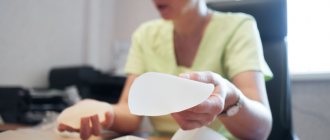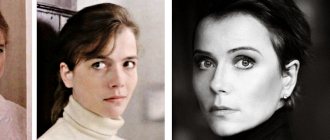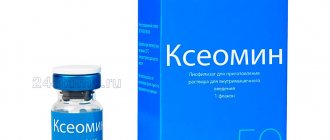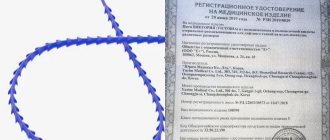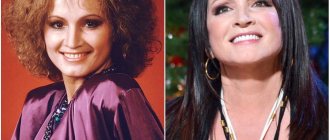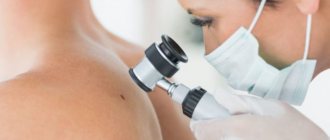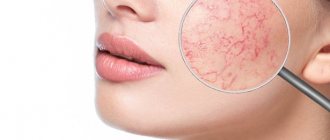Sergei Ivanovich Kolesnikov (June 1, 1950, village of Gusanagyukh, Armenian SSR, USSR) - doctor, statesman and political figure. Embryologist, Doctor of Medical Sciences, Professor, Academician of the Russian Academy of Medical Sciences. Deputy of the State Duma of the Federal Assembly of the Russian Federation of the 3rd, 4th and 5th convocations.
He was born into a family of doctors in the high-mountainous Armenian village of Gusanagyukh on the border with Turkey, where his father, career military man Ivan Nikolaevich Kolesnikov, was sent to serve in 1948. Mom, Valentina Ivanovna, worked in a local hospital. Graduated with honors from the medical faculty of the Novosibirsk State Medical Institute (1972). Scientific research by S.I. Kolesnikov began in 1967 under the guidance of Professor M.Ya. Subbotin at the Novosibirsk Medical Institute in a scientific circle. During his student years, his first scientific works were published. The fundamental training received at the university in the field of histology and embryology allowed Sergei Ivanovich to continue his scientific work at the Institute of Clinical and Experimental Medicine of the Siberian Branch of the Academy of Medical Sciences of the USSR, where in 1970 he was hired, first as a junior researcher, and where he became the head of the laboratory (1980), scientist secretary, and then deputy director of the institution (1987). In 1973 he defended his PhD thesis on the topic “Peripheral cytotrophoblast of the human placenta”, and in 1982 – his doctoral dissertation on the topic “Morpho-functional characteristics of extra-embryonic organs with different immunological backgrounds of the maternal body”. This year S.I. Kolesnikov turned 31 and became the youngest doctor of medical sciences in the USSR.
He was elected chairman of the Council of Young Scientists and Specialists of the USSR (1982–1987) and a member of the Bureau of the Komsomol Central Committee. In 1987, he accepted an offer to move to Irkutsk and begin work on organizing the East Siberian Scientific Center. Chairman of the Presidium of the East Siberian Branch of the SB AMS of the USSR, later renamed the East Siberian Scientific Center of the SB RAMS (VSNTs SB RAMS). In 1998–1999 he headed the scientific center of medical ecology of the All-Russian Scientific Center of the Siberian Branch of the Russian Academy of Medical Sciences. In 1991, the general meeting of the USSR Academy of Medical Sciences elected S.I. Kolesnikov, a corresponding member of the USSR Academy of Medical Sciences, in 1997 - an academician of the Russian Academy of Medical Sciences (since 2013 - RAS) with a specialty in Embryology. Confirmed with the rank of professor in 1993.
From 1999 to 2003 - Deputy of the State Duma of the Federal Assembly of the Russian Federation of the 3rd convocation, Committee on Health and Sports. From 2003 to 2011 - Deputy of the State Duma of the 4th convocation, Deputy Chairman of the Committee on Education and Science. In 2007-2011 - deputy of the State Duma of the 5th convocation, deputy chairman of the committee on health protection (United Russia faction). From 2001 to 2012 - Advisor to the Presidium of the Russian Academy of Medical Sciences, since 2013 - Advisor to the Russian Academy of Sciences. Since 2022 - Deputy Chief Scientific Secretary of the Russian Academy of Sciences. In 2000 and 2012, he was a confidant of Russian presidential candidate V.V. Putin.
Professor of the Department of Public Policy at Moscow State University. Trained more than 60 doctors and candidates of science. Editor-in-chief of the journal Acta biomedica scientifica, member of the editorial boards of 20 journals. Under his editorship, 13 collections of scientific works have been published. Currently, the main subject of research is the legal and economic aspects of health protection, drug provision and social protection of the population of Russia, scientific and educational activities, on which more than 500 scientific and journalistic articles and interviews have been published.
Awarded the Order of Friendship of Peoples (1986), two Orders of Honor (1996, 2007), medals: “For Valiant Labor” (1971), named after Pokryshkin (2001), and the insignia “For Services to the Irkutsk Region” (2005). Laureate of the Government of the Russian Federation in the field of science and technology (2008), the Lenin Komsomol Prize in the field of science and technology (1984), the highest scientific awards of the Russian Academy of Medical Sciences - the Prize named after. N.I. Pirogov (2001) and im. I.V. Davydovsky (2007). Honored Worker of Science of the Russian Federation (2002), Honored Worker of Science of the Republic of Buryatia. Honorary Doctor of the University of Kingston-on-Thames (England, 1997), Honorary Professor of MIRBIS University (Moscow, 2009). Honorary Citizen of Detroit (USA, 1985).
Essays
Author of 24 monographs, 3 textbooks and guides for universities, 17 inventions, more than 400 scientific articles, including:
- Pregnancy and toxicants. – M., 1986. (co-author)
- The influence of persistent organic pollutants on the biotransformation of xenobiotics. – Novosibirsk, 2007. (co-author)
- Genetic and physiological relationships between mother and fetus. – M., 1985. (co-author)
- Imprinting of the action of toxicants in embryogenesis. – M., 1999. (co-author)
- Infection and man-made pollution. – M., 1996. (co-author)
- Placenta // Atlas of scanning electron microscopy of cells, tissues and organs. – M., 1987. – P. 436–455. (co-author)
- Phenomenological atlas of clinical electroencephalography. – Irkutsk, 2004. (co-author)
- Physiology of functional systems: textbook. – Irkutsk, 1997. (co-author)
Crossbow: Americans prepared COVID-19 against others, but lost control over the infection
Home / Politics / Crossbow: Americans prepared COVID-19 against others, but lost control of the infection /
A sensational confession was made by Russian academician Sergei Kolesnikov in an interview with Parliamentary Newspaper. The political consequences of the scientist's revelations may be very serious.
According to Kolesnikov, the effect of coronavirus is actually selective. “There is a difference in the reaction nationally, that is, along ethnic lines,” the academician admitted. These things will have to be taken into account over time when carrying out partial or complete vaccination of Russians. The latter, according to the academician, may follow a “military” scenario. But if the coronavirus does indeed selectively affect different ethnic groups, is it not, after all, a form of biological weapon that has escaped from secret laboratories?
But first, a little history. How American scientists experimented with a chimeric (hybrid) bat virus and why it could break free in the Chinese city of Wuhan was written in detail in a scientific article in the journal Nature in 2015. The Americans did not hide the article, otherwise it would, in essence, be an admission of their guilt. But there was no investigation into this blatant fact. Everyone took their fill of water.
Suspicions about the artificial origin of the current virus and that it was developed for evil purposes have been fueled by reports of the selective defeat of people of one or another ethnicity. Did the scientists miscalculate a little and their infection got out of control? Or was this done intentionally so that the pandemic would hide some global processes? But who then started the terrible process?
We are seeing the global consequences of the pandemic. The coronavirus has exacerbated the ongoing US trade war with China. Washington is trying to blame Beijing for hacking attacks on organizations studying coronavirus. And he intends to introduce sanctions under a similar pretext, fixing the imaginary guilt of China. Without bothering with evidence. Beijing has called this behavior immoral and is preparing a response.
Mikhail Delyagin , in particular, warned about on the pages of SP . So, is this the real purpose of a new type of biological weapon - the COVID-19 coronavirus?
For more detailed explanations, we turned to the author of the sensation, Academician of the Russian Academy of Sciences, Honored Scientist of the Russian Federation Sergei Kolesnikov .
— The different effects of coronavirus on people of different ages have been known for a long time. Almost from the very beginning, figures were given, even when the epidemic was raging in China. Mortality rates ranged from one-tenth of one percent among young children to 17−18 percent among elderly people over 65 years of age. These data are not questioned by anyone.
Another thing is that an almost asymptomatic course of the disease was revealed in the same children, which is still unclear what consequences it leads to. Another interesting thing is that coronavirus is transmitted very easily by pregnant women.
- It looks like “disposal” of old people. You also mentioned the ethnic aspect.
— Regarding the selective effect of coronavirus in the ethnic aspect, there is only preliminary data. In the United States, there is a lot of noise that the infection rate and mortality rate among Latinos and African Americans is significantly higher than among whites. But I would treat this data with caution. Since it is not yet clear exactly: is this related to ethnicity or the social environment? Because the listed categories of the US population for the most part live in worse conditions than whites. And they have less income. Now there is a discussion about this.
At the same time, there is still some ethnic component in the pandemic. The same receptors for angiotensin-converting enzyme 2 (Latin abbreviation ACE2 - author) have different manifestations in different ethnic groups. Reactions to medications also vary among different ethnic groups. We have proven this. Including at the Irkutsk Scientific Center for Family Health and Human Reproduction. Antioxidant status and oxidative status, which is one of the main factors in the development of severe complications with coronavirus, also differ among different ethnic groups.
— At first it seemed that only the Chinese were getting sick.
— The most interesting thing is that now there is not one, but three, if not four variants of coronavirus walking around the planet. One option is the one that was in China. The second is European, “Italian-Spanish” (started in Italy). He then came to the east coast of the United States. And the virus came to the West Coast from China.
And the third option is almost benign - the “Korean” virus. Because there he lost one of the aggressive proteins. That's why everything is great in South Korea now. We don’t know what’s happening in the DPRK.
Therefore, it remains to be correctly calculated how this depends on ethnicity. I would be careful not to say that we are facing a “Chinese” virus. Bats, which are the source of the virus, have a habitat in tropical latitudes. And this is Spain and Italy, for example.
In general, there are more questions in this than answers. That's why both scientists and politicians are nervous. But it’s time to stop panicking and start doing systematic work to prevent the spread of coronavirus.
— You have not ruled out complete vaccination of Russians. In your opinion, is it possible in today’s rather lax Russia? Now, just like that, everyone is shaking their license. The authorities are afraid to touch people even for their own good. Everything is done with an eye to the West .
“The pandemic has shown that human rights have taken a back seat. This is all over the world, not only in Russia (in our country everything is exactly as it was, and it remains approximately the same). They told them: “Tsits! Stay home!". And the citizens sit quietly.
Moreover, this is also in those countries that have always boasted of their democracy. It turns out that democracy is less influential than fear of infection or the authorities. This fear has been sown. Consciously or not, I don’t know. I'm not a conspiracy theorist.
But it seems that this is some kind of experiment. They check: is it possible to govern society more strictly than before? Is it possible to “build” a society? In fact, the world is moving towards stricter rules of governance, towards authoritarianism. This is an obvious trend.
In this regard, we recall the classic of Marxism-Leninism: it is impossible to live in society and be free from society. We were once taught this at school. And now this is coming to life.
And those who ignore safety rules... Well, if a person sits somewhere in isolation, in a village and doesn’t bother anyone, then for God’s sake. But if he begins to behave in such a way that he can infect others, then in many countries there is criminal liability for such people. And in our country there is also criminal punishment for deliberate infection with certain infections.
— Goodbye to the freedom that liberals have been praying for for the last 20-30 years?
— Is this pandemic used to tighten regimes in the world or is it about accelerating the natural historical process?.. In history, we know, there were fascist and semi-fascist regimes. And in Europe, and even in the USA, partly during the famine and the Great Depression. Although it is customary to remember only one country (Germany - author).
This was the case all over the world. Then this order was replaced by the dominance of the “golden billion”. Now this order has begun to collapse. The pendulum is swinging.
Former member of the UN Commission on Biological and Chemical Weapons Igor Nikulin has no doubt about the US involvement in the creation of the coronavirus and calls for a close investigation of this particular issue.
— There is a publication in the journal Nature from 2015, but there is no natural focus of the virus. Therefore, even to say that it was of natural origin is undignified.
Everything is explained in the article. How they created the virus, how they tested it on human proteins. How to make sure that it reproduces with a high titer. And they announced to the whole world: “Hurray, victory!” You don't even need to prove anything here.
Remember: in August 2022, a pandemic began in the United States, which was called the “vaper disease.” And Trump at the meeting demanded to ban electronic gadgets. And by that time there were 500 infected and 20 dead, including the military.
Prior to this, in August, the largest research center, Fort Detrick in Maryland, was closed. So, I think the epidemic in the US started back in August last year.
“But to hold Americans accountable, it takes force to insist on an investigation.” Who is able to do this? The UN is weak .
— This topic needs to be discussed. Because the activity of Americans has already gone beyond any international framework. Russia can and should raise this issue on the world stage.
Sergey Aksenov
Source
We recommend reading
- Politics 01/06/2022
URGENT: CSTO will send a peacekeeping contingent to Kazakhstan
- Politics 01/02/2022
Military-political results of 2022
- Policy 01/01/2022
This is no longer science fiction, but digital slavery: A robot prosecutor has been created in China with an accusation accuracy of 97%
- Politics 01/06/2022
Basic information on the situation in Kazakhstan on the evening of January 5
Partner News
Literature
- Kinshchak V. Doctor? Politician? Both: To the 50th anniversary of his birth // East Siberian Truth. – 2000. – May 31.
- Klimova E. 10 years from the life of Sergei Kolesnikov, academician of the Academy of Medical Sciences of Russia // East Siberian Truth. – 1997. – March 7.
- Kolesnikov Sergey Ivanovich // Healthcare Personnel of the Russian Federation. 2006–2007. – T. 2. Academicians and corresponding members of the Russian Academy of Medical Sciences. – Kazan, 2006. – P. 36.
- Who is who in Irkutsk and the Irkutsk region. – Irkutsk, 1999. – P. 142.
- Who is who in the Irkutsk region. – Irkutsk, 2006. – No. 16. – P. 32.
- Who is Who in modern medicine. – M., 2004. – T. 1. – P. 223–225.
- Sergei Ivanovich Kolesnikov (on his 60th birthday) // Bulletin of the WCC SB RAMS. – 2010. – No. 1 (71). – pp. 103–105.
Kolesnikov Sergey Alexandrovich
- Home /
- Our services /
- Plastic surgery /
- Our specialists /
- Kolesnikov Sergey Alexandrovich
Sign up for a consultation
Born August 14, 1960
| Work experience - 21 years | ||
| January 2012 - present 4 years | Medical center Skhodnya Plastic surgeon Performing plastic, aesthetic and reconstructive operations of any complexity, including endoscopic - on the face, external and internal nose, mammary glands, ears, anterior abdominal wall, buttocks, thighs and lower legs, genitals in men and women changing gender. | |
| January 2003 - present 13 years | Multidisciplinary clinic Maka-Med Moscow Plastic surgeon Performing plastic, aesthetic and reconstructive operations of any complexity, including endoscopic - on the face, external and internal nose, mammary glands, ears, anterior abdominal wall, buttocks, thighs and lower legs, genitals in men and women changing gender. | |
| January 2000 – January 2012 12 years 1 month | Clinic of aesthetic medicine Medlaz Moscow Plastic surgeon Performing plastic, aesthetic and reconstructive operations of any complexity, including endoscopic - on the face, external and internal nose, mammary glands, ears, anterior abdominal wall, buttocks, thighs and lower legs, genitals in men and women changing gender. | |
| January 1995 - January 2002 7 years 1 month | Clinic Avicena, Deamed Moscow Plastic surgeon Performing plastic, aesthetic and reconstructive operations of any complexity, including endoscopic - on the face, external and internal nose, mammary glands, ears, anterior abdominal wall, buttocks, thighs and lower legs, genitals in men and women changing gender. | |
| Education | ||
| Higher | ||
| 1983 | Kuban State Medical University, Krasnodar Retraining in maxillofacial surgery, plastic surgery, Plastic surgery | |
| Advanced training courses | ||
| 2015 | Advanced training in plastic surgery Academy of Postgraduate Education, Plastic Surgery | |
| 2014 | Advanced training in ENT surgery ENT department of the Central Clinical Hospital, Moscow, ENT surgery | |
| key skills | ||
| Knowledge of languages | Russian - native English - read professional literature | |
| Additional Information | ||
| About me | Kolesnikov Sergey Aleksandrovich Plastic surgeon Kolesnikov Sergey Aleksandrovich Born in 1960 in the city of Krasnodar. In 1983 he graduated from the Kuban State Medical Institute named after. Red Army. In 1996 by the decision of the Dissertation Council of the Central Research Institute of Traumatology and Orthopedics named after N.N. Priorov in Moscow to Kolesnikov S.A. awarded the academic degree of Candidate of Medical Sciences. Kolesnikov S.A. underwent professional retraining and received certificates in the specialties of maxillofacial surgery, plastic and reconstructive surgery, and urology. She has been working in Moscow plastic and aesthetic surgery clinics for about two decades. The range of operations he performs is very extensive and includes almost all types of plastic surgery (various types of skin tightening, body contouring, etc.), including intimate surgery. Intimate surgery is a very specific and extremely complex branch of medicine, which is why in the Russian Federation (and also in other countries) there are only a few specialists in this field. Sergei Alexandrovich always strives to ensure that the result of his work is not only the physical recovery of the patient, but also his moral and aesthetic satisfaction. | |
LIST OF OPERATIONS PERFORMED:
FACIAL PLASTY Circular facelift (without forehead) Endoscopic forehead lift Lower face lift Rhinoplasty (nose surgery) with septum correction (improved breathing) Otoplasty (ear surgery, local anesthesia) Auricular reconstruction Blepharoplasty (eyelid surgery, local anesthesia) Hair transplant
Percutaneous method: Upper eyelids Lower eyelids Upper + lower eyelids incl. transconjunctival access (without skin incision) Correction of Asian eyelids, incl. with simultaneous correction of epicanthus Enlargement of cheekbones Correction of chin Surgical increase in lip volume Lip augmentation with fillers based on hyaluronic acid Maxillotomy (endoscopic improvement of nasal breathing) BODY PLASTY Liposuction (removal of subcutaneous fat) Abdominoplasty (abdominoplasty) Thigh lift
Increasing the volume of the buttocks Correction of curvature of the legs Removal of ribs to make the waist thinner Correction of hallux valgus deformity + correction of hammertoes BREAST PLASTY Breast augmentation Breast lift
Reducing buzz
Breast reconstruction using your own tissue
Breast correction and enlargement using your own fat
LIPIFILLING (correction of volume with one's own fat) Lipofilling of the tear trough Lipofilling of the breast Lipofilling of the nasolabial folds Lipofilling of various areas of the face INTIMATE PLASTY Reduction of the labia Restoration of virginity Narrowing of the vagina (reduction of vaginal volume) posterior colpography posterior and anterior colpography Circumcision of the foreskin of the penis
Penile prosthesis One-component prosthesis Three-component prosthesis Testicular prosthesis Correction of the curvature of the penis Lengthening of the penis Thickening of the penis Varicocele Phalloplasty TRANSEXUALS Reduction of the brow and frontal ridges Chin correction including the cost of implants Resection of the angle of the lower jaw Removal of the Adam's apple Removal of the Adam's apple + voice change Removal of ribs to make the waist thin Orch ectomy Vaginoplasty (penal inversion; formation of the vagina from a section of the sigmoid colon) Hysterectomy Phalloplasty Testicular prosthesis Metoidioplasty (formation of the penis with the simultaneous formation of a male-type urethra from the clitoris and labia minora)
Ask a Question

